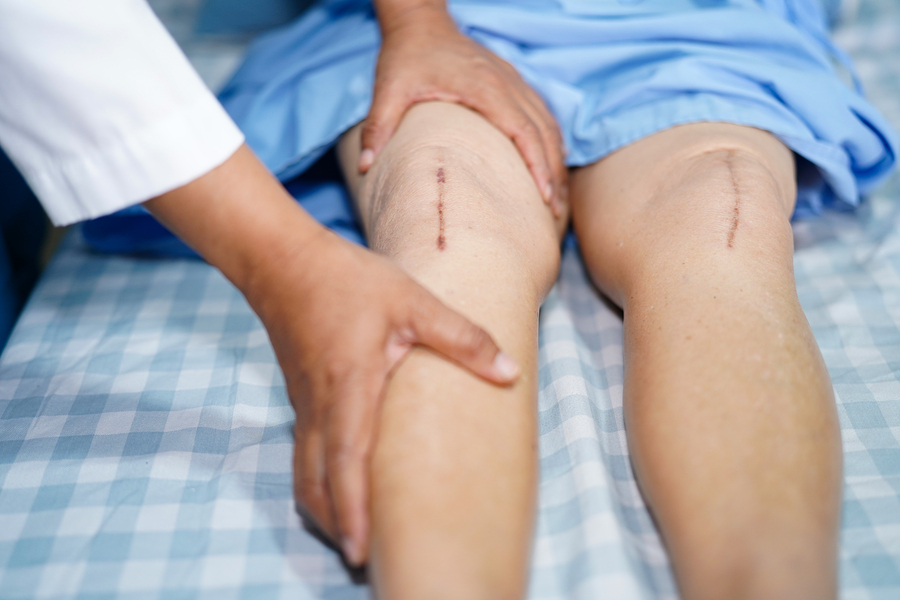Total joint replacement is a surgical treatment option that may be performed by orthopedic surgeons. This is most commonly considered for the treatment of damaged joints that are causing ongoing problems for the patient.
When total joint replacement takes place it is usual that a prosthesis made from ceramic material, or metal or plastic will be used. The design of this prosthesis is such that it will naturally replicate the standard movement of the original joint.
When considering which joints are the most usual candidates for total joint replacement, the hip and the knee are the most common. However, this is also something that a surgeon may decide to do for the joints of the elbow, shoulders, wrists, and ankles.
What Are Joints?
The point at which two bones meet is where a joint is located. There are different types of joints that have the ability to function in different ways.
Click here to read all about how you can keep your joints healthy!
Damaged Joints
There are several different health conditions that may contribute for the need to undergo total joint replacement. This will usually have happened because the condition in question has caused damage to the cartilage of the joints. Possibly the most common of these conditions is arthritis. If a person experiences a fracture then this could also lead to damage to the cartilage of the joints.
The first option for treating these conditions will usually be medication or a series of physical therapy sessions. However, in the event that these treatments fail to provide adequate relief for the pain experienced by the patient, then it becomes necessary to consider surgical options.
Preparing Pre-Surgery
If the decision is made for you to undergo total joint replacement then your orthopedic surgeon will first explain this procedure to you. You will be required to undergo a standard consultation to ensure that you are fit for surgery before you get the go ahead. This will simply be a check in on your general health to determine if you are ready for the procedure. This will likely consist of blood tests and a cardiogram, among other routine tests.
Preparing yourself for your surgery in other ways is also advisable! You may find that asking additional questions of your surgeon so that you are fully aware of what lies ahead is a great way to put your mind at ease.
You can also protect your body physically by making healthy dietary choices and exercising regularly in the run up to your surgery. These are also positive actions thay you can embrace in your life in general.
Post-Surgery Support
Having an adequate care plan in place for the days and weeks after your surgery is essential if you are to help your body through the recovery process.
If you are able to have someone to support you in your own home post-surgery then this is always going to be a good idea. Your movement is initially going to be restricted and you are therefore unlikely to be able to go about your day to day activities as usual.
It may also be of use to you to make some adjustments around your home in order to ease your recovery process. This could involve things such as installing a bench in the shower so that you can wash whilst sitting, and also installing handrails around the house for ease of moving around.
You will generally be able to use your new joint very shortly after your operation, and this is something your surgeon will encourage you to do gently as soon as poissble.
The Surgical Procedure
Total joint replacement surgery will usually only take a couple of hours and may be performed in an outpatient facility.
Within the procedure itself, the damaged bone and cartilage in question will be removed by the surgeon, and then replaced with the new prosthetic joint.
As with any surgery, there are potential risks and complications that your surgeon should make you aware of. There are issues that can present both during the surgery itself and also during the recovery period. This includes blod clots, damage to the nerves, infections, and problems with the installation of the prosthetic itself. However, the majority of these issues can be treated easily.
Recovery
During your recovery it is important that you are aware that temporary pain in the surgical area is normal and to be expected. Furthermore, the muscles surrounding your new joint are likely to have weakened due to inactivity, and this can contribute to some pain and limited movement.
As you move through the recovery process it is helpful if you try to engage in physical exercise daily. This will help the body to strengthen the muscles of the affected area, as well as to keep the rest of your body active and mobile.
Diagnosis
If you are experiencing pain then seeking a professional diagnosis as to the cause is something you shouldn’t wait too long to do! The sooner your doctor is aware of the issue, the sooner you can begin a treatment plan.
Taking care of your joints is one of our specialties at Onto Orthopedics and you can click here to learn more about what we do!
References
1) https://orthoinfo.aaos.org/en/treatment/total-joint-replacement
Related Posts
Cigarettes May Inhibit Inflammation Treatments
Axial spondyloarthritis, also known as AxSpa, is a chronic…








